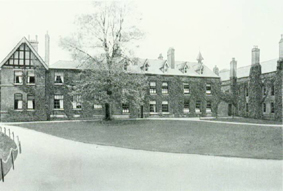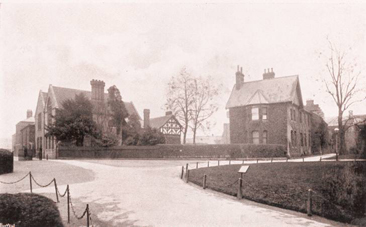A brief history of Hereford Cathedral School
Hereford Cathedral School is one of the oldest schools in the country, probably existing as a song school to the Cathedral in the 7th century. The school was re-founded in the 1380s and was a small school until the inter-war period. The school gained direct grant status in 1945, and by 1970 had expanded to 370 pupils. The change to co-education in 1970, the start of a junior school in 1987 and the assisted places scheme helped to expand numbers further.
Cathedral schools established within a few years of the foundation of any Cathedral Church, are the oldest schools in the land. The conversion to Christianity of Mercia (late 7th century) and the creation of a new See in the City suggest that a Cathedral school would have been established in Hereford by 700 AD.
There is no exact record of the school's existence, however, until 1384, when Bishop Gilbert (after whom our library is named) appointed Richard Cornwaille as school master. Since then Hereford Cathedral School has been variously housed in and around the Cathedral, its Close and Cloisters. For over a hundred years, until the turn of the nineteenth/twentieth century, the present School House accommodated the Headmaster, many pupils and most teaching rooms.
In the 20th Century, the nature of the school changed from independence to Direct Grant and back to independence again in the 1970's. During that decade co-education was introduced, and now there are the same number of girls at Hereford Cathedral School as boys.

The increase of pupils has been matched by the acquisition of properties in and around Castle Street and the Close. Two historic building have added purpose-built facilities - Science laboratories, Old Block (Mathematics and the new Gilbert Library), the gymnasium, the dining room and the Viscount Portman Centre for Art and Technology. A magnificent building on the edge of the Close has also been acquired: The Zimmerman building, as it is now called, gives the school an extra 2500m of space, and houses three departments as well as the main hall, Powell theatre and the newly developed Sixth Form Centre. Most recently expensive improvements have been made to our ICT network and provision, a new Sixth Form recreational area, careers area and games pavilion at Wyeside.
Hereford Cathedral School has grown into a day school of around 520 boys and girls, aged from 11 to 18. This number includes a Sixth Form of 140 housed in the newly opened dedicated sixth form centre. The school is truly coeducational - in every aspect - with the number of girls and boys being equal across the years. There is a staff of over fifty teachers, with a dedicated careers department, library and other ancillary staff providing support services. |